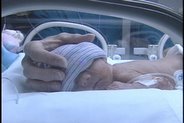Memorandum, Surgeon General’s Office, for camp and division surgeons, September 27, 1918. Personal Defense Against Spanish Influenza. It is desired that the following 12 suggestions for avoiding influenza be given all possible publicity in your camp, by placarding and other proper means of bringing it to the attention of the command.
HOW TO STRENGTHEN OUR PERSONAL DEFENSE AGAINST SPANISH INFLUENZA. - Avoid needless crowding; influenza is a crowd disease.
- Smother your coughs and sneezes; others do not want the germs which you would throw away.
- Your nose, not your mouth, was made to breathe through; get the habit.
- Remember the three C’s—a clean mouth, clean skin, and clean clothes.
- Try to keep cool when you walk and warm when you ride and sleep.
- Open the windows—always at home at night; at the office when practicable.
- Food will win the war if you give it a chance; help by choosing and chewing your food well.
- Your fate may be in your own hands; wash your hands before eating.
- Don’t let the waste products of digestion accumulate; drink a glass or two of water on getting up.
- Don’t use a napkin, towel, spoon, fork, glass, or cup which has been used by another person and not washed.
- Avoid tight clothes, tight shoes, tight gloves; seek to make nature your ally not your prisoner.
- When the air is pure, breathe all of it you can; breathe deeply.
 If anyone can tell me the link between infection and tight clothes, please do so. The material above is from Office of the Army Surgeon General, Public Affairs, and the Directorate of Information Management, Fort Detrick, Md. Their web site is quite informative.
If anyone can tell me the link between infection and tight clothes, please do so. The material above is from Office of the Army Surgeon General, Public Affairs, and the Directorate of Information Management, Fort Detrick, Md. Their web site is quite informative.Image info: Emergency hospital during influenza epidemic, Camp Funston, Kansas.
Source: National Museum of Health and Medicine
Bird flu Spanish flu Pandemic 1918 flu history VIGILAIR


No comments:
Post a Comment